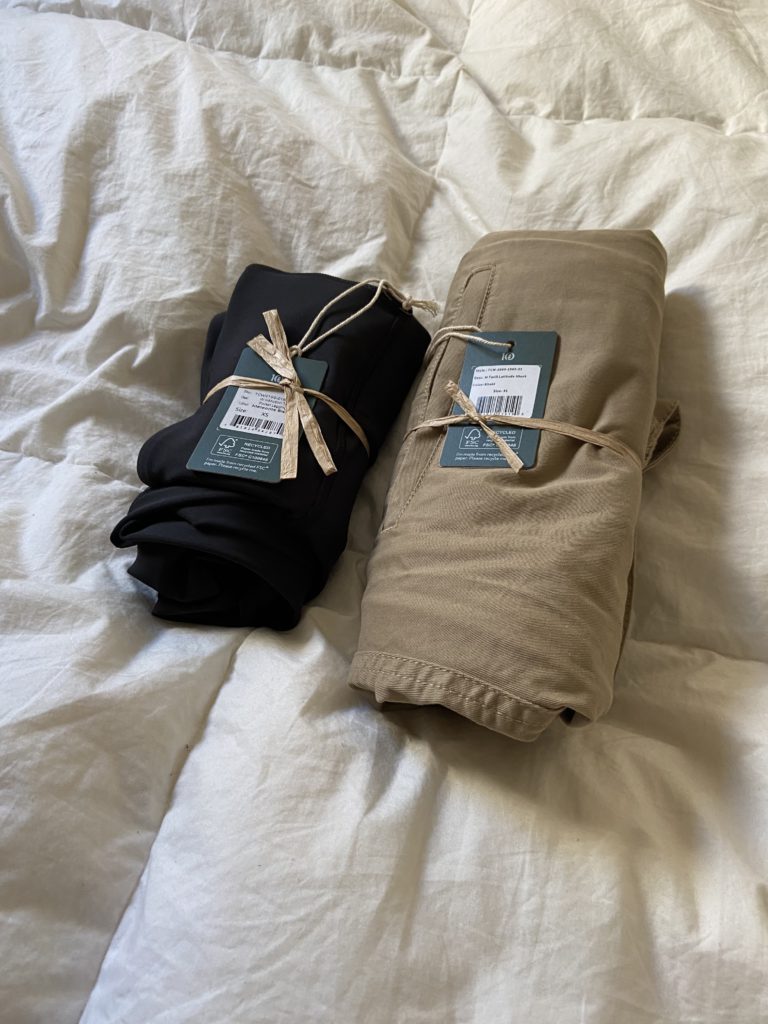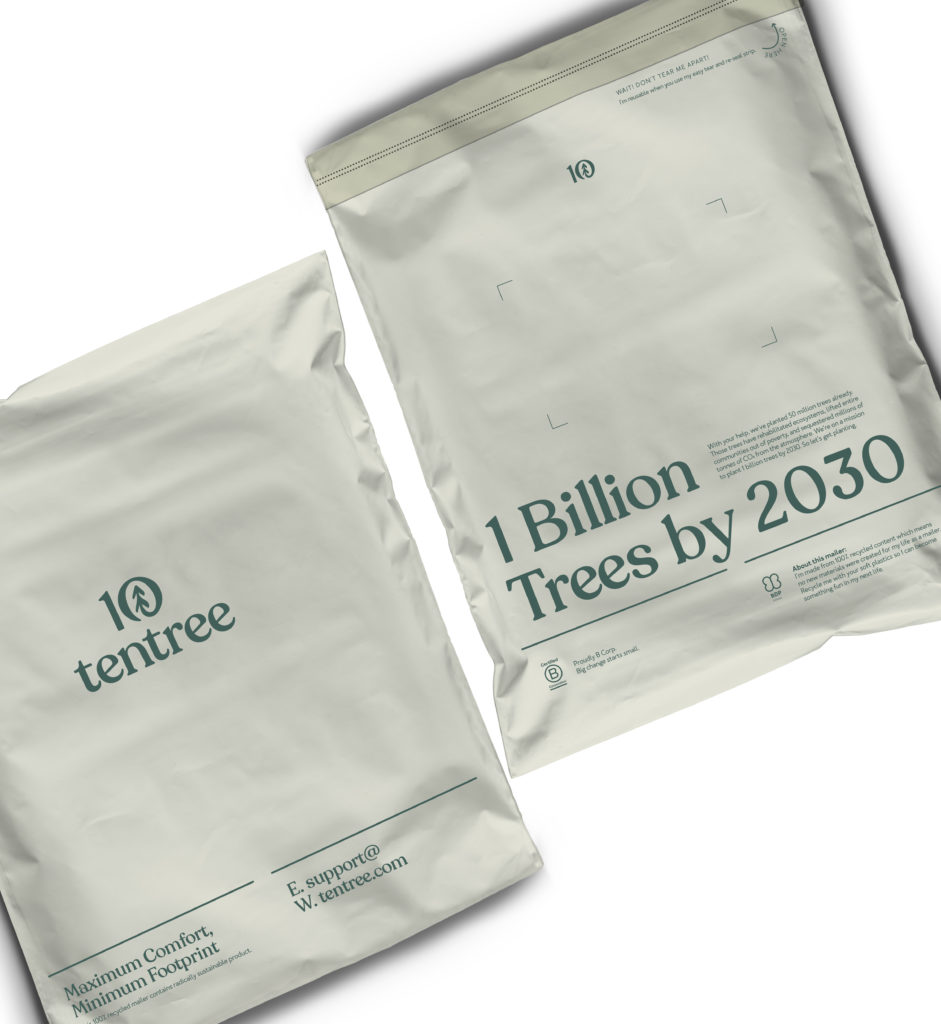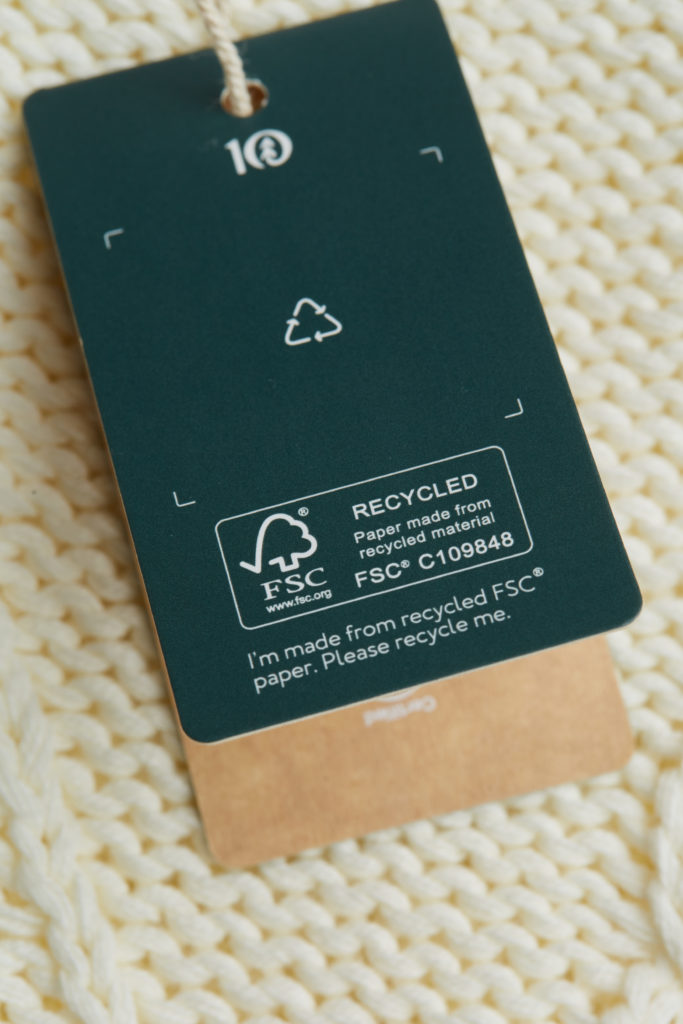We’ve all seen “packaging fails” on social — when products are shipped in excessive and unnecessary amounts of materials. While these laughable (and horrific) fails have put a spotlight on the need for more sustainable solutions, we want to help you determine what packaging is actually sustainable by highlighting the current state of product packaging, listing the factors that play into packaging sustainability, and sharing what we’re doing at tentree.
The Environmental Impact Of Packaging
Around 80 billion items of clothing are made annually, most of which are packed and shipped in single-use or non-recyclable packaging that makes its way into landfill and incinerators. In 2020, over two billion people purchased goods or services online, and online retail sales surpassed 4.2 trillion U.S. dollars worldwide.
With more online sales than ever comes more packaging. Since March 2020, corrugated cardboard box shipments have increased, when they jumped 9% compared to 2019 according to the Fiber Box Association. The demand for filled-air packaging products is set to grow by $1.16 billion between 2020 and 2024 because of the dramatic increase of online sales. Research from the Ellen MacArthur Foundation estimates that 26% of all plastic made is used for packaging, 72% of which is thrown away.
According to Canopy forest conservation, around 3 billion trees are pulped every year to produce 241 million tons of shipping cartons, cardboard mailers, void-fill wrappers and other paper-based packaging.
Factors To Consider When Looking At Sustainable Packaging
Sustainable packaging isn’t as simple as choosing a recycled or biodegradable option (even though that’s definitely important). Here are some of the factors to look out for when assessing how sustainable packaging really is:
- Minimize packaging: the less is used, the better.
- Assess production impact: consider chemicals used during manufacturing and the emissions created that affect people, planet and wildlife.
- Reduce excess transportation: the cost of transporting ethical options can add up.
- Increase biodegradability: the sooner packaging is broken down and the less it leaves behind, the better.
- Do your research and find out what “green” really means: greenwashing is a common issue in the packaging industry — that’s why doing your homework is crucial.
- Use recycled materials when you can’t use biodegradable ones.
- Look at materials that don’t contain harmful chemicals.
What We’re Doing At tentree
Prana’s Responsible Packaging Movement
We’ve joined forces with Prana in their Responsible Packaging Movement — an initiative started by Prana and joined by like-minded brands (like us) that aims to eliminate excess packaging waste from supply chains in a responsible, long-lasting way.
At tentree, we’ve committed to:
- Eliminating single-use plastics
- Using only FSC certified and mostly 100% recycled paper for tags and packaging inserts
- Using 100% recyclable shipping mailers that are biodegradable
- Being completely transparent about our packaging choices
Minimizing Packaging
The good news for the earth is that we already use very little packaging — we implemented roll-packing almost 2 years ago. What’s roll-packing? It means that clothes are rolled and tied with a simple FSC recycled paper tie at our factories and placed in the carton lined with a master poly bag liner to ship to our distribution centers.
This “master poly bag liner” is a box liner that protects the merchandise from potential moisture damage during shipment. It fills the shipping carton and once the carton is full, the sides are folded over (no closure needed) and your clothes are safe from harm. Once the carton arrives at a distribution center or retailer, it’s properly recycled.
85 to 90% of our products are no longer packed in individual poly bags. Only a few of our Items have to be packed in individual poly bags to protect light coloured clothing from potential damage. We’ve made sure that these poly bags are 100% recyclable.
We’ve also eliminated the use of plastic tag fasteners, replacing them with organic cotton string on all of our hang tags.

Maximizing Packaging Biodegradability
The mailers we use to send our cozy clothes your way are made from 100% post-consumer recycled plastic, plus they’re 100% recyclable and biodegradable. We source them through Rudholm Group, a supplier committed to eco-friendly products.
You can recycle our mailers through regular soft plastic recycling streams, plus it biodegrades in an anaerobic environment (once buried or in water) within a much much shorter timeframe than virgin plastic — in about 2 to 3 years, according to our supplier. How? BDP™ is added during the manufacturing process.
BDP™ is an eco-friendly additive that attracts microbes that secrete enzymes. These enzymes combine with moisture in the environment to start forming a ‘film’ on the buried plastic. This ‘bio-film’, rich in microbes and moisture, starts breaking down the plastic and ‘digesting’ it. Basically, BDP™ is a catalyst and enhancer of the biodegradation process — what used to take hundreds of years now takes only a few years.
Once the plastics treated with BDP™ are broken down and digested by the microbes, all that’s left are biogas and humus. The bio gases can be collected for clean energy and the humus is just organic compost. We source our BDP™ additive through Change Plastic for Good. Because BDP™ biotechnology can be combined with recycled plastic, it’s allowed us to get closer to closing the loop on packaging circularity.
Why didn’t we go with compostable mailers? It’s a fair question. When we originally looked into packaging we explored compostable mailers, and discovered that they weren’t a very sustainable option. If these mailers aren’t thrown into a compost bin they wouldn’t biodegrade and they take an incredible amount of resources to produce. They can’t be recycled, but if they do end up in a recycling plant by accident they can damage the machinery.

Using Recycled Products
All our hangtags, inserts and sleeves are made of FSC certified paper and the majority are FSC 100% recycled paper. We’ve recently introduced mailers made from 100% post-consumer recycled plastic that are 100% recyclable and biodegradable for shipments from our Distribution Center to customers.

Minimizing Excess Transportation
We’ve chosen to partner with a packaging supplier that has production facilities in different parts of the world, specifically close to our key manufacturing areas. This way, we minimize the transportation between the sustainable packaging supplier and our facilities. For example, our hangtags for India production are made in India, and packaging from Turkey goes to our Turkish factories. Plus we offset all of our shipping emissions as part of our commitment to go carbon neutral as a company.
Always Looking To Improve
When it comes to operating Earth-First, we’re committed to continually evolving our processes to do better by the environment. Here are some areas that we’re intentionally working on for more eco-friendly solutions.
In our partnership with Prana, we’re working on finding better solutions to the small percentage of our goods that still require some protective packaging like light-coloured items or items that can easily crease. For these items, we currently use recyclable poly bags and are exploring either paper bags or a similar option as our mailers — 100% post-consumer recycled, recyclable and biodegradable poly bags.
Another item we’re looking to improve as part of the Responsible Packaging Movement is the carton liner. Even though these are recycled through soft plastic streams at our Distribution Center facilities, we’re seeing if we can source a 100% recycled content box liner that will still be recyclable to improve the overall impact.
The challenge here is that there are very few suppliers of those recycled liners around the world. If we were to mandate all our factories to use these liners, we would have to ship them across countries or continents to get to all of the factories we partner with. We’re assessing whether the impact of shipping these recycled liners is less than using locally-sourced, standard recyclable liners.
Want to learn more about our commitment to sustainable practices and ethical manufacturing? We’ve got you covered.

